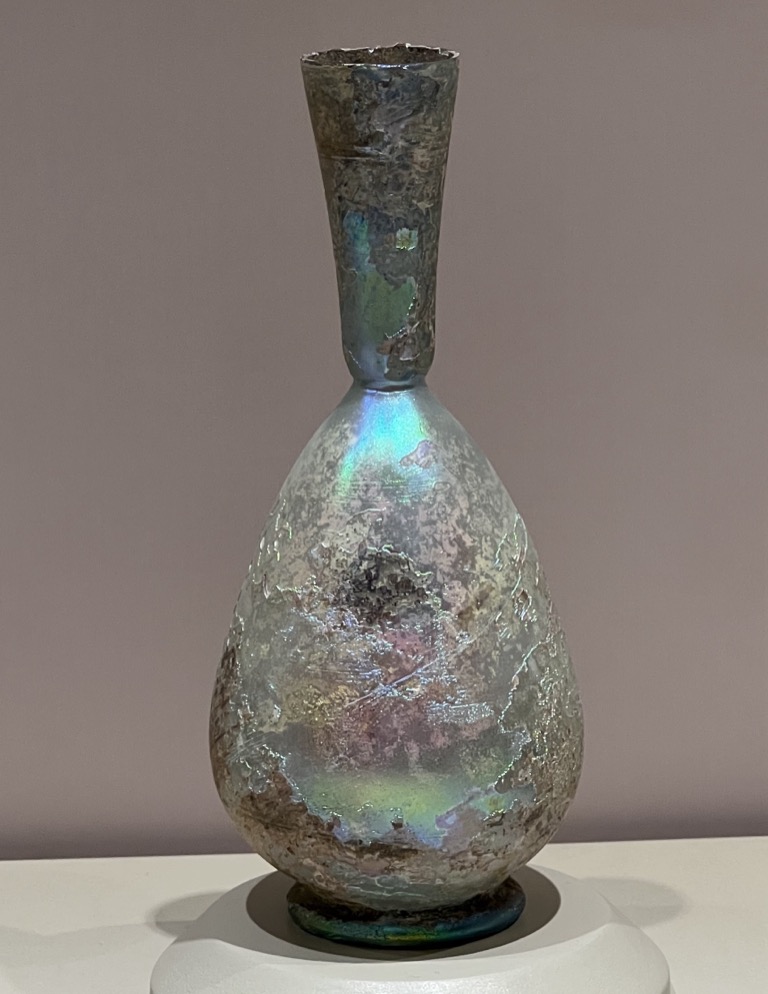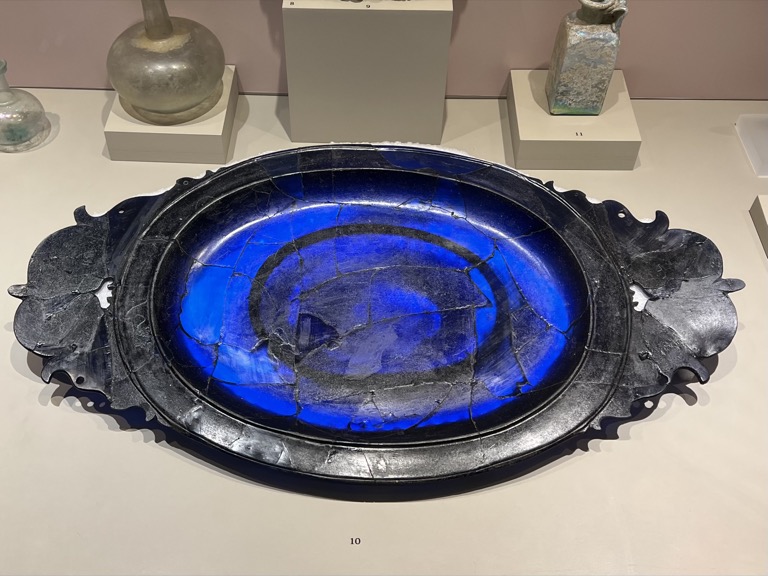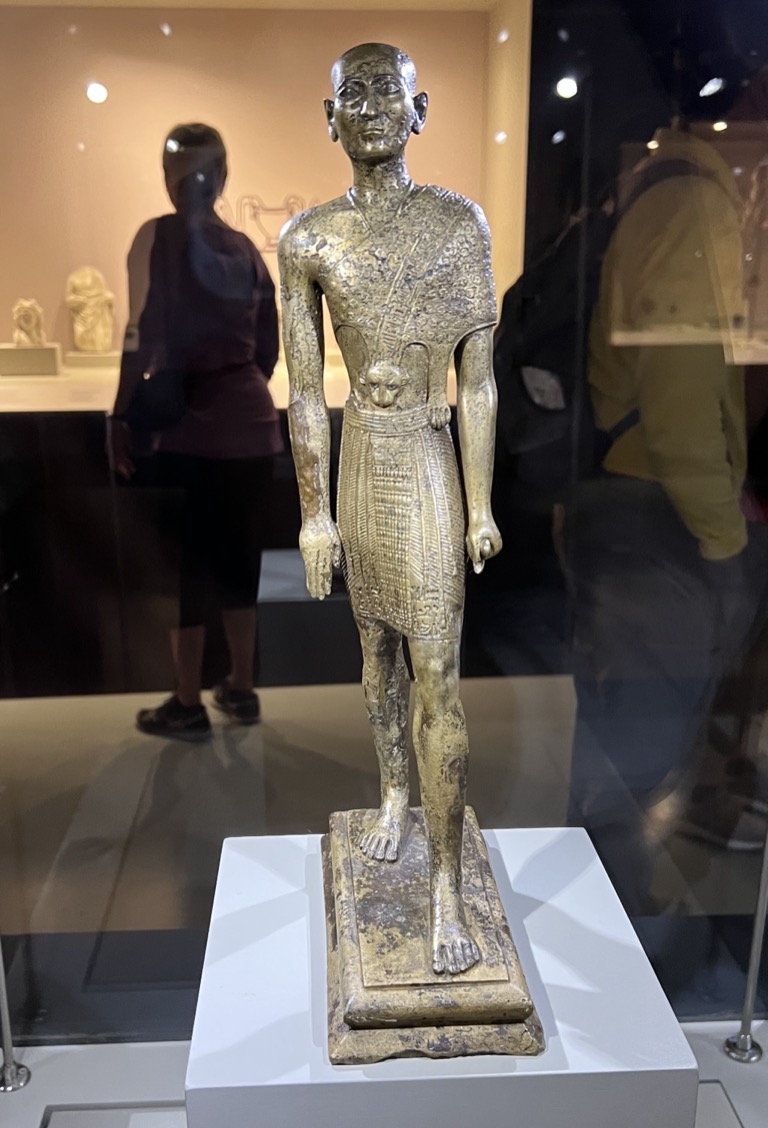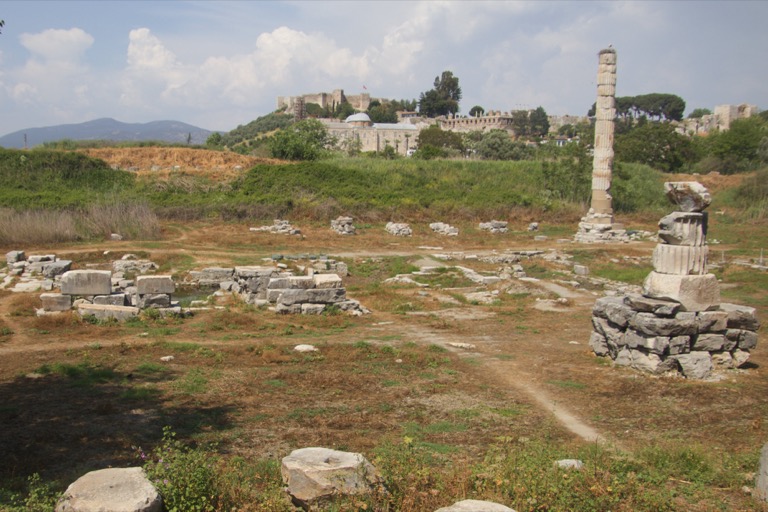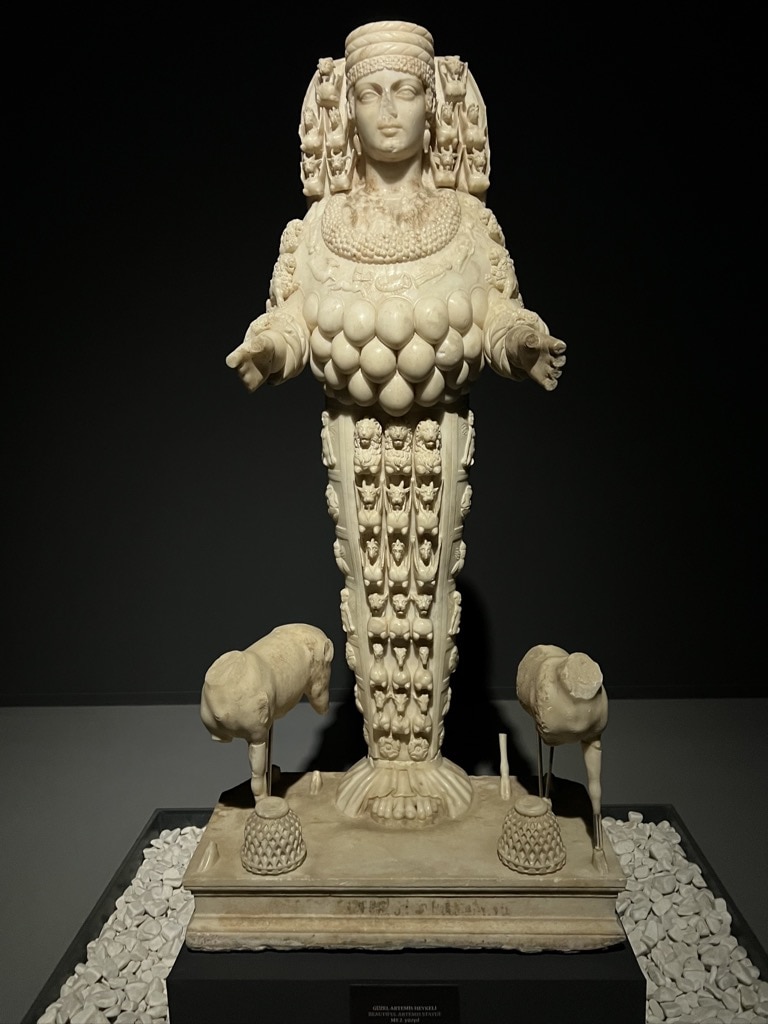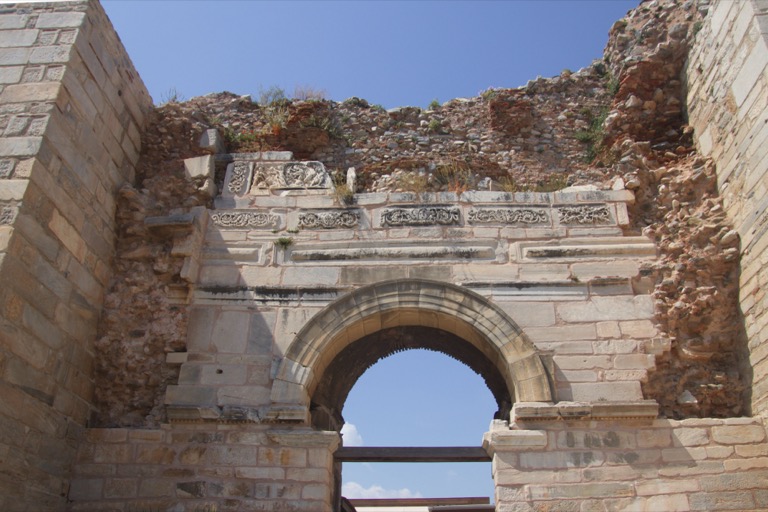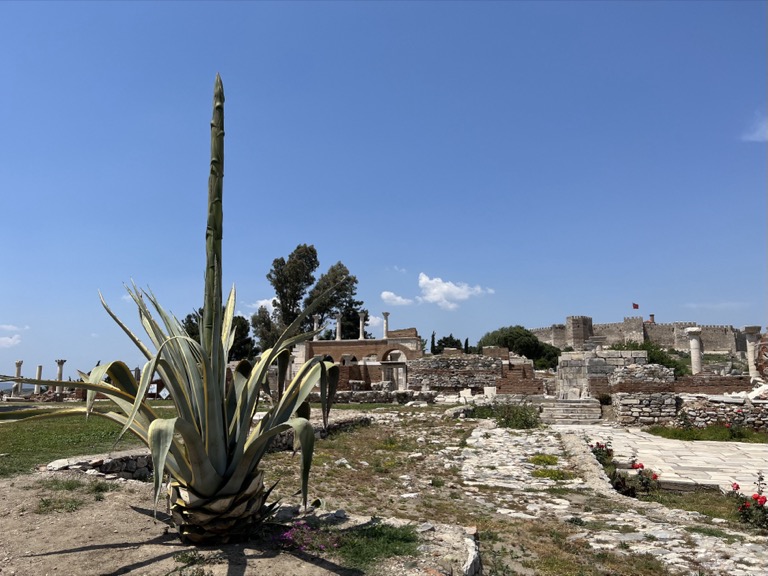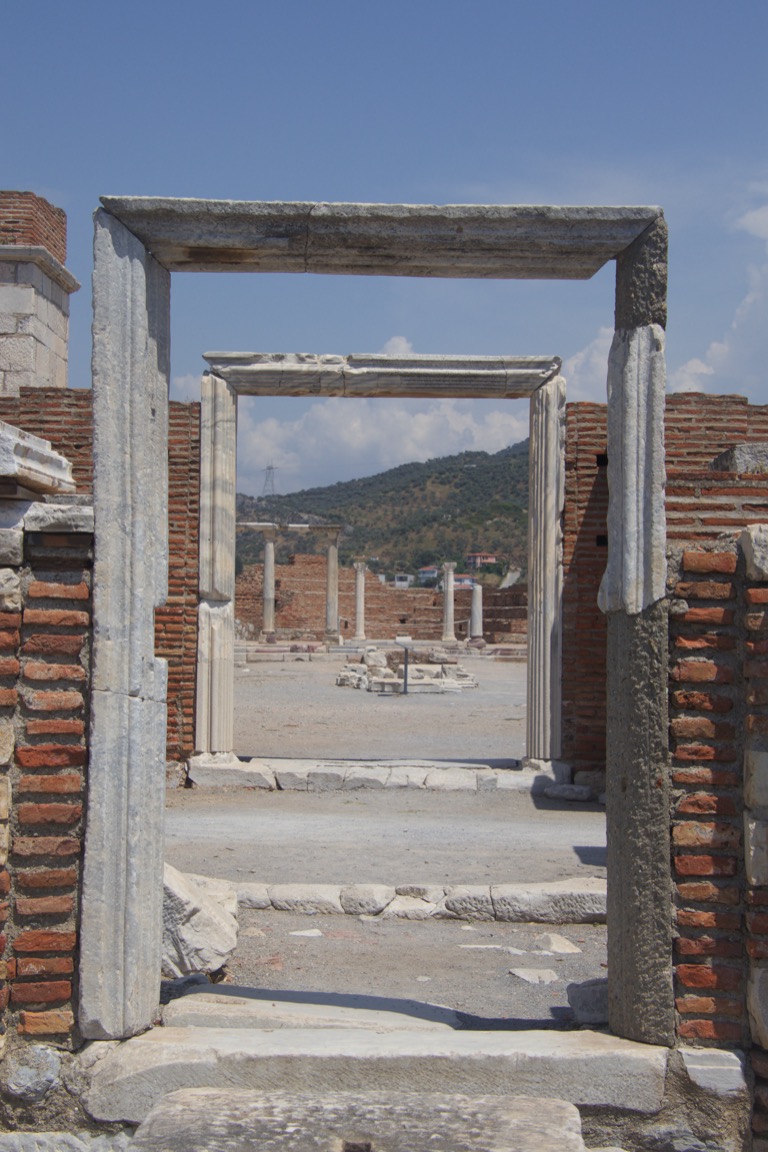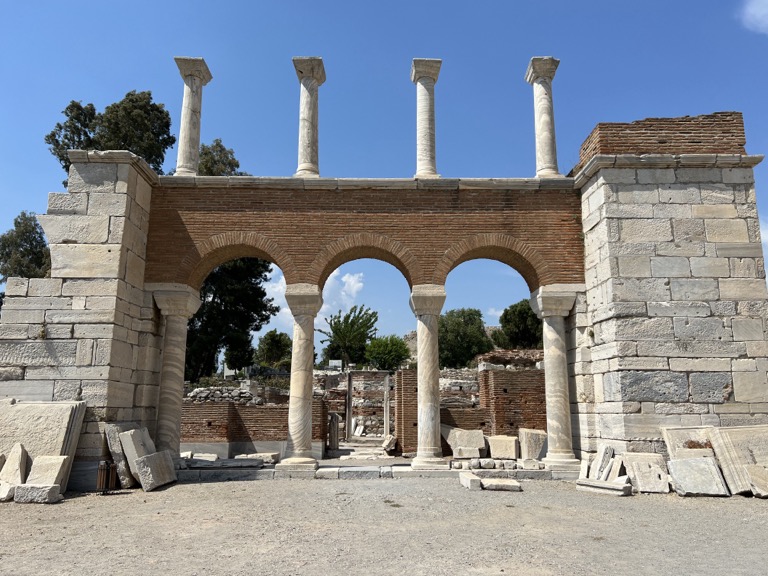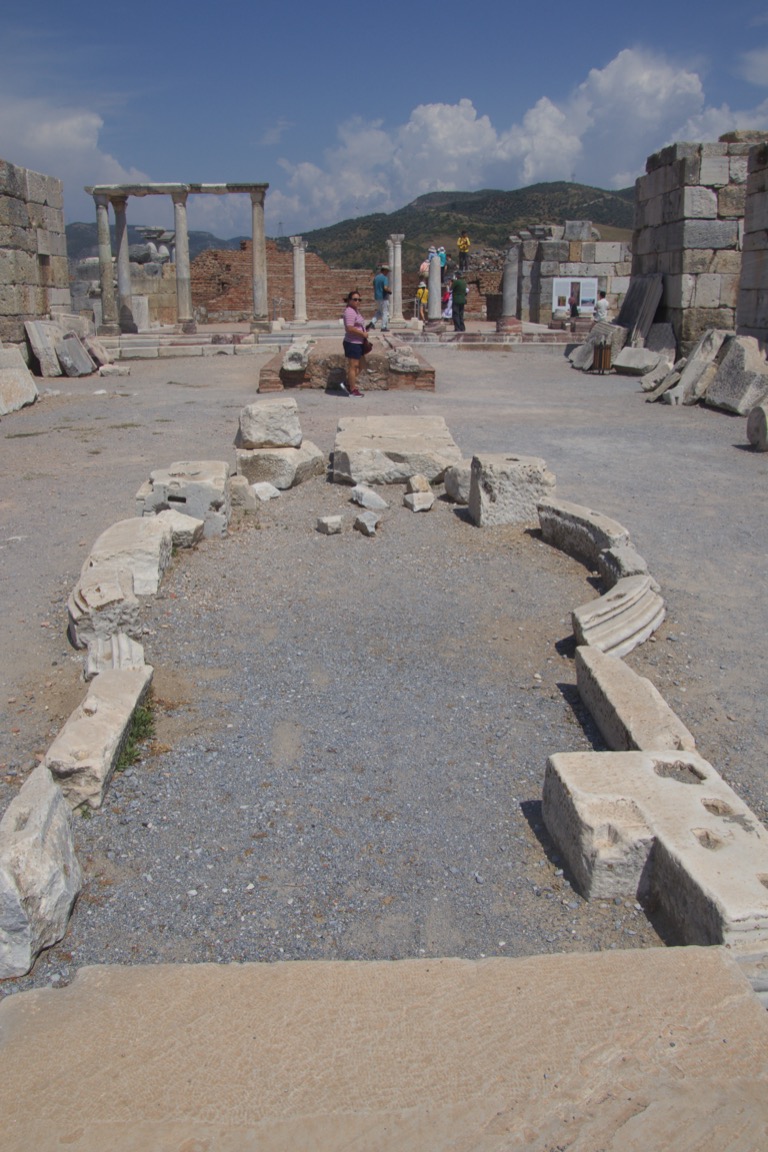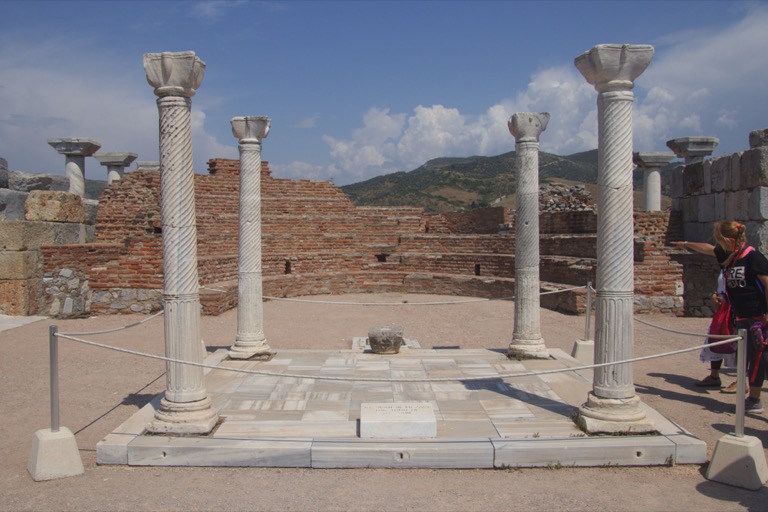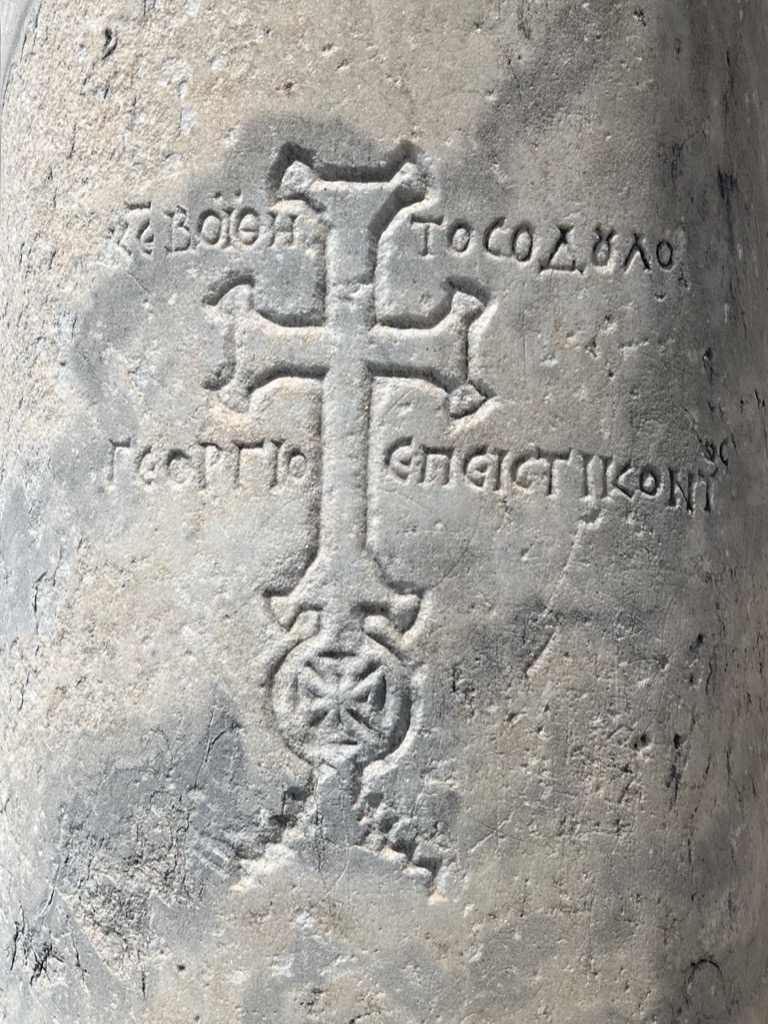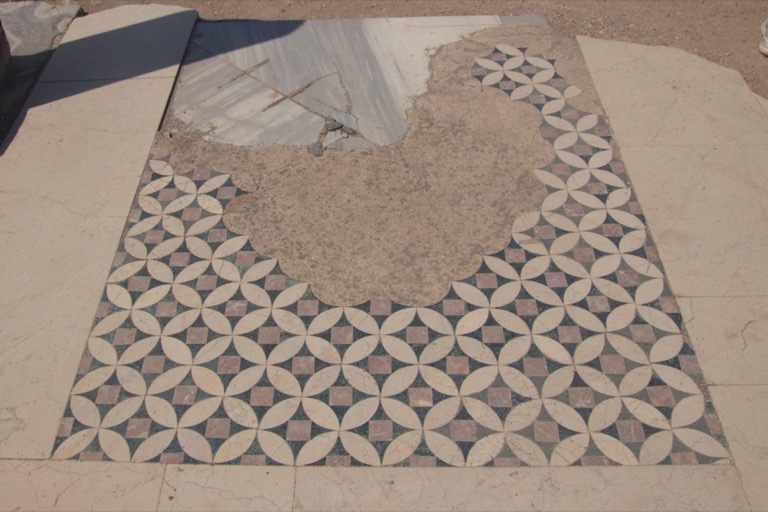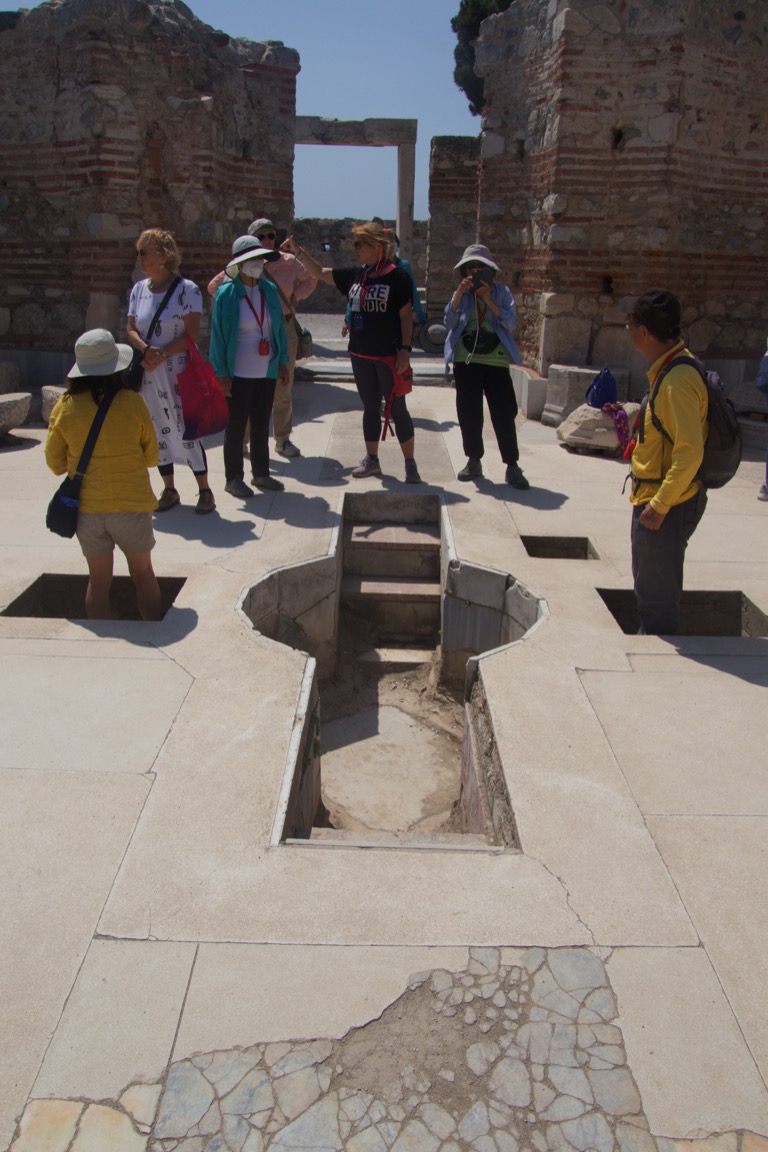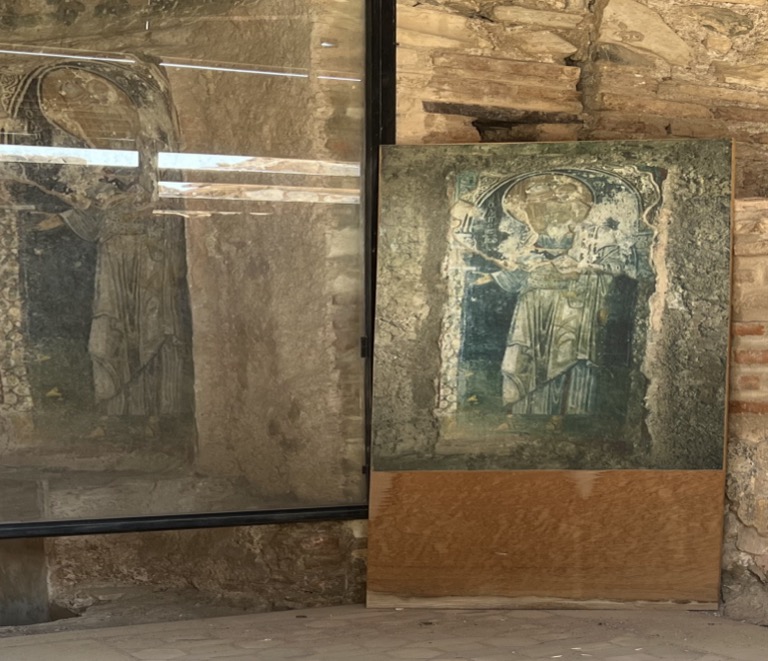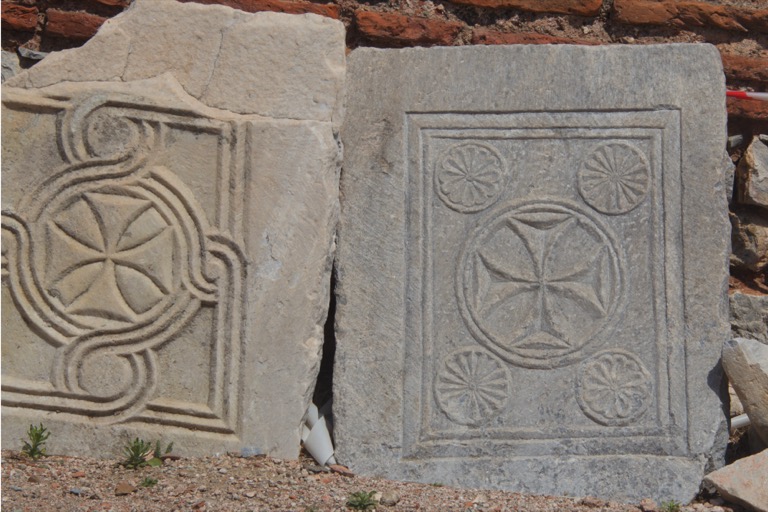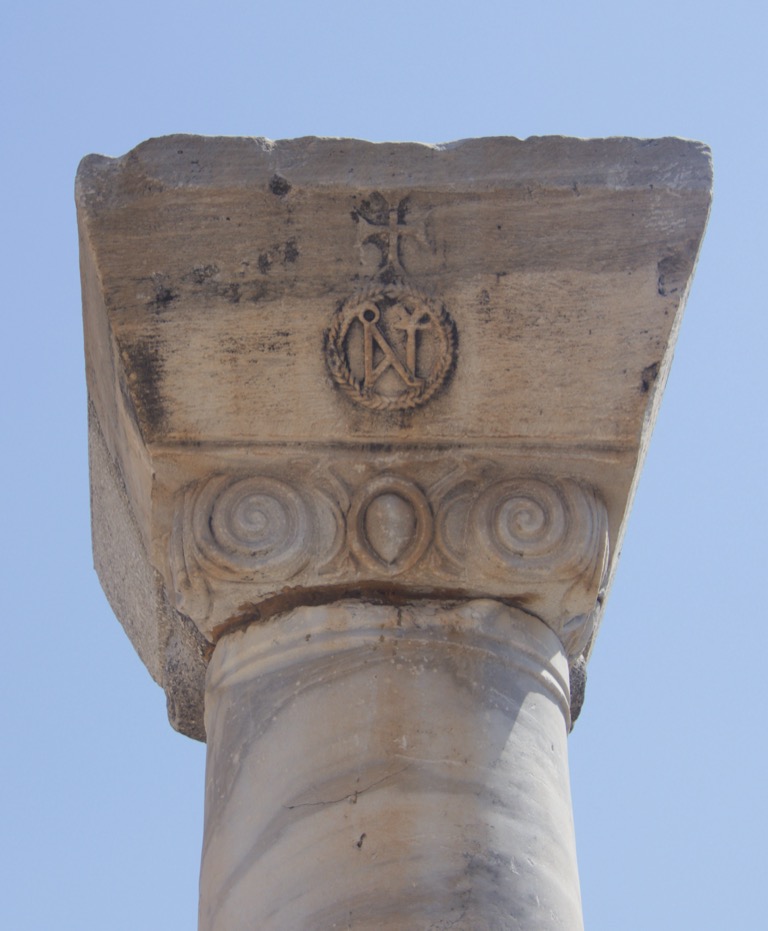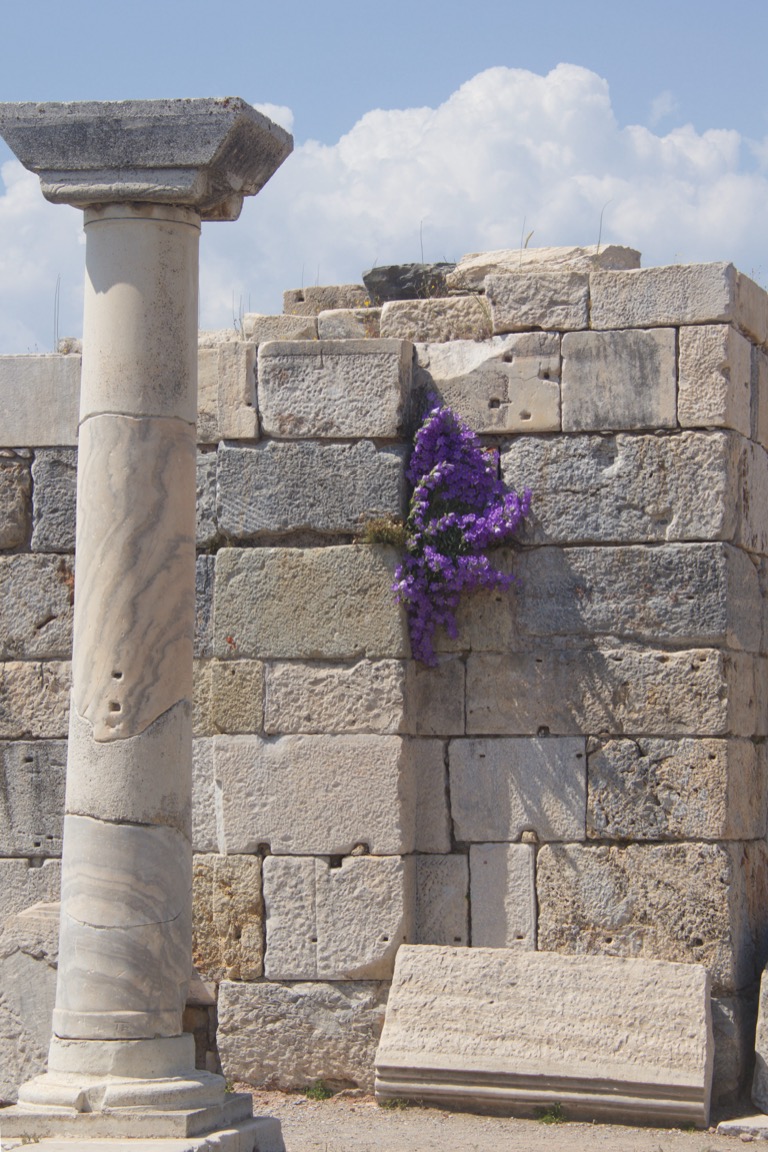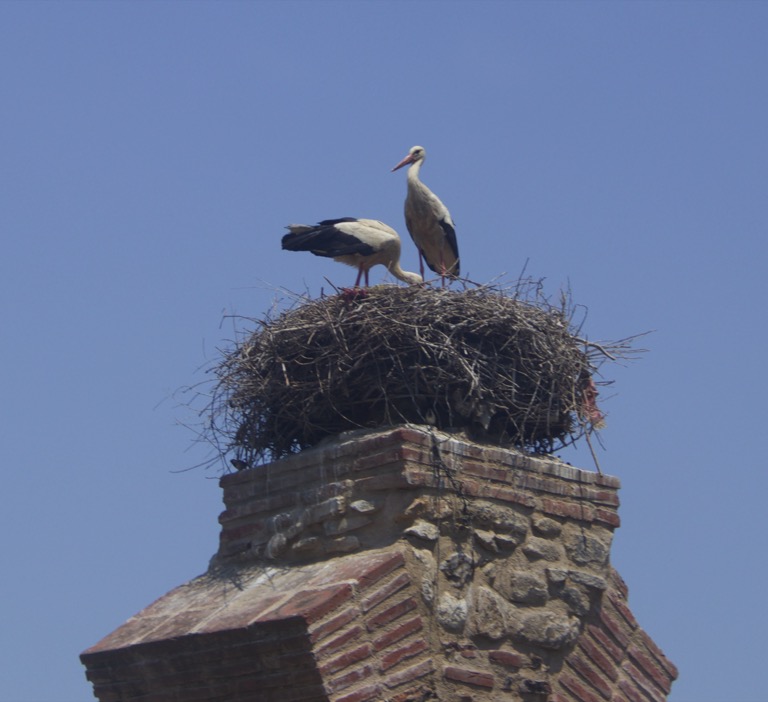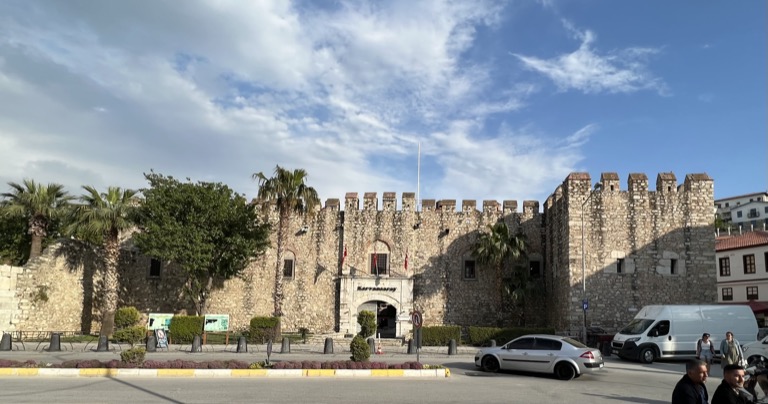on
To Kusadasi
We departed from the Gulet in the morning for a bus ride to Kusadasi.
During the first part of the bus ride, our guide gave us the full story of Mustafa Kemal Atatürk, which included his part of World War I at the battle of Gallipoli and the Turkish war for independence.
Looking out at the fields, lots of fruit trees, olives and some figs. There are some greenhouses, strawberries are common in them. We also see fields of tomatoes.
Lots of switchbacks on the route as we go up and down some small mountains heading to Selçuk, the nearest town to Ephesus.
To allow more time for the Ephesus visit tomorrow, we visit the Ephesus Archaeological Museum today. It has some of the statues removed from Ephesus. Many others are in the Ephesus Museum in Vienna, Austria.
Rome controlled Egypt after Alexander, so it’s not to surprising to see this.
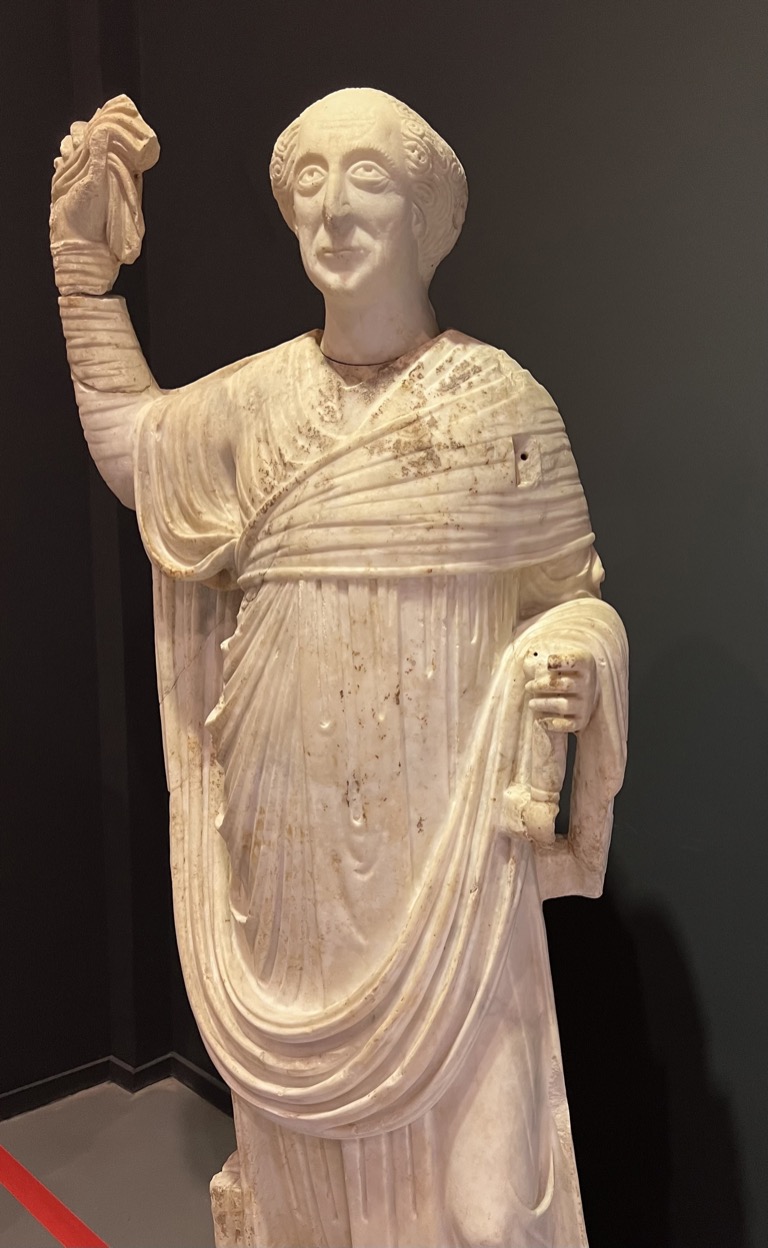
The group decided to visit St John’s Basilica instead of having extra free time in Kusadasi, which is a cruise ship port. There was one big cruise ship in port that could hold over 5000 passengers.
Here is an overview photo of the site, taken from the Temple of Artemis site looking towards the mosque, with the church to the right and then the Ottoman era citadel behind the mosque. Much of the stone in the temple was used to build the church and later the mosque. All that’s left is one column of one of the seven wonders of the ancient world. The church wanted the temple destroyed to stamp out the worship of Artemis.
They did find two statues of Artemis in some side rooms of the Boulueterion, the small enclosed theater where the leaders of the city met, in wonderful condition when Ephesus was excavated. They are in the museum.
There are the remains of a monastery around the church that was built later, after the church became a pilgrimage site. This is the entrance to the complex.
Once inside, walking towards the west entrance, we encountered this huge agave plant, the stalk is 8-9 inches in diameter.
Entering the church from the west entrance looking towards the alter in the east.
Moving a little bit east into the church, then looking north gives an impression of how high the church was. The church is laid out like a cross with a central dome at the intersection. The big column on the right supported a corner of the central dome.
Looking east.
Moving further east. This is where St. John was buried. There is a room beneath this marble that housed his bones. There is a tunnel entrance on the other side to access the room. They are not there now. It is rumored that crusaders may have taken the bones.
There is an entrance on the south side that has a cross and the names of Jesus carved into it.
The floor near the front was Opus Sectile marble patterned.
On the north side of the church, a side building contains a baptistery for adults.
Also on the north side in a little chapel are the only remaining frescoes. They are behind glass to preserve them, lots of reflections in photos. They have boards with photos of the frescoes, here you can see a board with the photo and the original through the glass.
There are numerous crosses on the site.
The bellflower will grow almost anywhere.
We saw some storks nesting on monastery ruins nearby. If you look closely at the overview photo above, you’ll see that storks are nesting on the lone remaining column from the temple of Artemis. We also see them on top of mosque domes.
We got to the hotel with several hours to walk downtown to the shopping area before supper, but with fewer cruise ship passengers as the ship was leaving soon, a fact that some shop keepers told us as we walked by.
We saw the caravansarai that is right next to the cruise ship port.
